Additional information
| Product Dimensions | 3.31 x 2.76 x 2.76 inches |
|---|---|
| Item Weight | 13.5 ounces |
| ASIN | B00EY3YGBS |
| Item model number | V314060BU000 |
| Batteries | 2 Lithium ion batteries required. |
| Customer Reviews | /** Fix for UDP-1061. Average customer reviews has a small extra line on hover* https://omni-grok.amazon.com/xref/src/appgroup/websiteTemplates/retail/SoftlinesDetailPageAssets/udp-intl-lock/src/legacy.css?indexName=WebsiteTemplates#40*/.noUnderline a:hover {text-decoration: none;}4.8 out of 5 stars314 ratingsP.when('A', 'ready').execute(function(A) {A.declarative('acrLink-click-metrics', 'click', { "allowLinkDefault" : true }, function(event){if(window.ue) {ue.count("acrLinkClickCount", (ue.count("acrLinkClickCount"), 0) + 1);}});});P.when('A', 'cf').execute(function(A) {A.declarative('acrStarsLink-click-metrics', 'click', { "allowLinkDefault" : true }, function(event){if(window.ue) {ue.count("acrStarsLinkWithPopoverClickCount", (ue.count("acrStarsLinkWithPopoverClickCount"), 0) + 1);}});});4.8 out of 5 stars |
| Best Sellers Rank | #157 in SLR Camera Lenses |
| Is Discontinued By Manufacturer | No |
| Date First Available | September 9, 2013 |
| Manufacturer | Olympus |
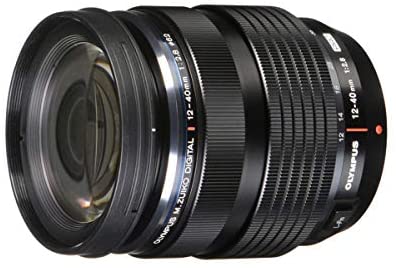
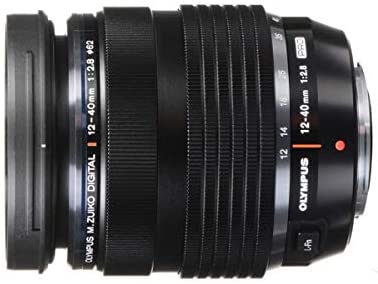
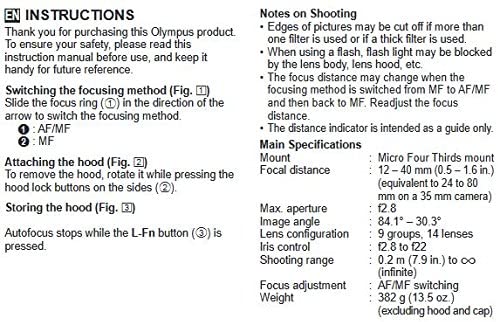
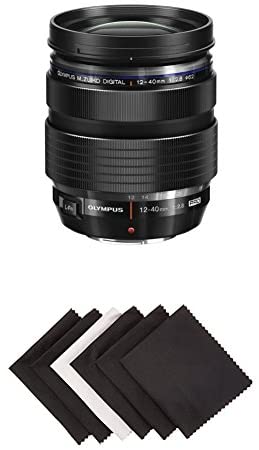
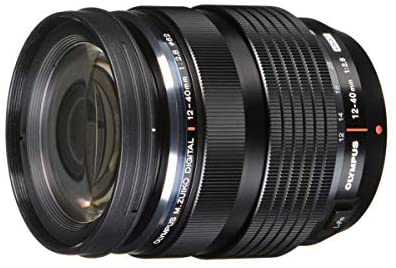
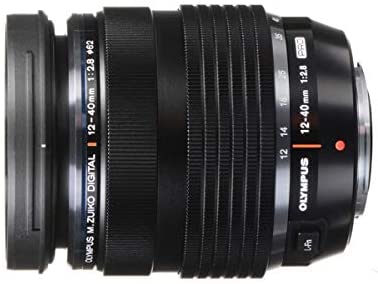
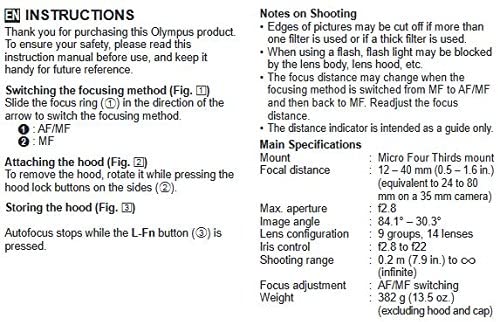
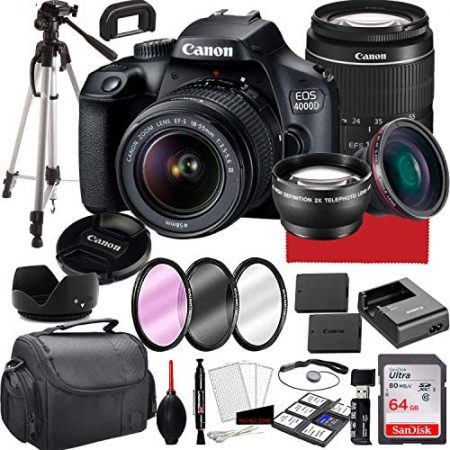
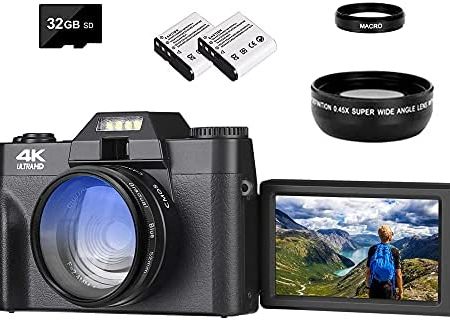
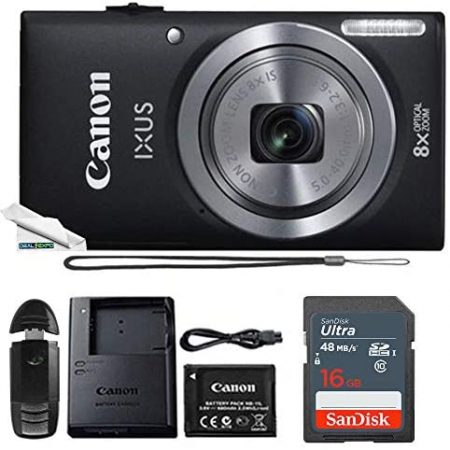
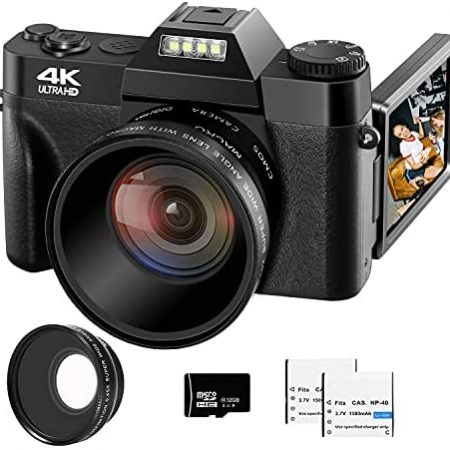
Nuclear Powered Finger Puppet –
I sold several Olympus primes and cheaper zooms to afford this lens, and I honestly don’t miss any of them except the 60mm macro.It’s sharp. Of course it’s sharp. But the contrast is honestly better than the Olympus 45mm f/1.8. I always felt the other lenses had a bit of a hazy look. I really thought it was just a quirk of the Olympus cameras, but it’s gone with this lens.I thought I’d find f/2.8 limiting, but I always found that opening up to 1.8 was a great way to get pictures that weren’t quite in focus, or just too little was in focus. I was always stopping down anyways. Even at 2.8, I generally prefer to be able to shoot at f/4 unless I’m intentionally trying to blur the background. That really depends on what kind of photographer you are. Still, the 45/1.8 did have creamier out of focus areas. That might have just been because of the wider aperture, but I feel like it just rendered out of focus areas a bit better. Still, this lens isn’t terrible at it. Busy backgrounds tend to stay busy, though. It’s sharp enough that you can get away without too much sharpening. That helps a lot when you have to boost the ISO.The close focusing distance really surprised me. I mostly keep a decent camera for product photography (and basically upgraded to an E-M5 II for it’s high res mode). I was afraid selling the macro lens would be a mistake, you can get pretty close. Closeups of things like flowers are no problem. Real macro stuff will still require a proper macro lens, though.Autofocus is as quick as I’ve seen with Micro 4/3. I mean, it should be quick. It struggles more in low light than the primes did, likely just because of the smaller aperture. It’s a rare issue, but it’s worth noting.It’s heavy. It’s not huge, really. No longer Olympus’ cheap 45-150, but a big bigger around. But it’s heavy. It does kinda change the balance of the E-M5II. I found myself holding it by the lens instead of the camera. It’s not bad, but it’s different than the super light primes/zooms I used to have. It feels fantastic to hold, though. Everything you actually touch is metal. The zoom and focus rings have a lot more resistance than I was used to. At first I didn’t like it. Now everything else feels loose and sloppy. It’s just what you get used to, I guess. But it’s smooth. The manual focus clutch is a fantastic feature. I still haven’t found a use for the lens fn button, but then I never really needed as many function buttons as the E-M5II has. It’s still a nice touch.One issue I’ve had is that the lens hood seems to occasionally fall off. It clicks on tight. And I can’t just pull it off. I think the release button gets bumped sometimes. It only actually locks on one side, and I feel like the issue would be fixed if it locked on both. It’s a small issue, but it’s happened to me several times.Some people complain about the lens cap. These people should not be allowed in public unsupervised.
Amazon Reviewer –
This is truly a “Pro” lens. I am a long time Leica user with a bunch of Leitz lenses, and one of the reasons that I use Olympus SLR cameras as well, is the close “look” the Oly Zuiko lenses have to the Leitz glass. This lens is one of the best in my bag including my Leica lenses. The build is what one would expect from a professional lens. Very sturdy and tight construction. Because of the metal construction this lens is one heavy bugger, probably as heavy as the M1 camera it is attached to. The auto focus of this lens is extremely fast and quieter than other auto focus lenses I have used (compared to other auto focus lenses used on my Oly E1 digital SLR). Optically this lens is phenomenal. I have used this lens for about a month on numerous subjects from extreme close ups to portraits. It’s so sharp that the portraits need to be “un-sharpened” in Lightroom/Photoshop. Color rendition is great but of course depends on how the camera is set up. I am beginning to think that this lens will remain on the camera, never needing removal. Other being a bit heavy, this will be my main carry around lens.
M. Gotts –
I’ve owned Olympus’ OM-D E-M5 camera body since Christmas 2012. Using the kit 12-50mm and the 40-150mm (24-100mm and 80-300mm 35mm equivalent) lenses I’ve had a fun year capturing photos. The camera has been everything I wanted it to be, with the exception of being just average tracking kids playing soccer.But the 12-40mm f/2.8 lens takes the camera to a different level. I thought I was getting decent performance from the 12-50mm lens — and I thought wrong. It’s okay, for what it is, but it’s slow (f/6.3 at 50mm) and just average in sharpness. With nothing to compare to, I didn’t realize how it was holding back the E-M5’s potential.The 12-40 is truly top caliber. Sharp from corner to corner. Chromatic aberration cannot be found. Fast for extending the E-M5’s low light capabilities at modest ISOs (I can gain nearly three stops from the 12-50mm in many situations). On the PC I’ll zoom in on shots and be astonished by the crispness that simply didn’t exist before.Having never owned an expensive DSLR (I had a decent Nikon FE2 film body and some Vivitar Series I lenses in the 80’s, however), I’d been lulled into thinking the images I was capturing were simply all that such a camera was capable of. The E-M5 is a very good micro four thirds body, after only the new E-M1. What difference could one lens make? Well, as it turns out, a great deal.The 12-50mm has a smooth motor drive mode for video (which I rarely shoot) and a dedicated macro mode, which is nice. But the 12-40mm, while not being optimized for macro, turns out to be a fully capable macro lens as well, better than the 12-50, IMHO, because of its superior resolution and significantly faster performance and ability to isolate at f/2.8. The only step up for close up photography being to a dedicated macro lens. (And yes, I know that with regards to depth of field it is twice that of a full frame sensor. But f-stop is dimensionless, and with regards to light-gathering-per-sensor-size/exposure/ISO, f/2.8 is f/2.8 is f/2.8, whether it be APS, M43, full frame or a large format camera.)The only thing I don’t like is the price. $1,000 was a big chunk. But the way it has changed the performance of the E-M5 is truly revelatory. There really is a significant optical difference between a decent mainstream consumer lens and a pro level lens. The 12-40 lives on my camera now, and the 12-50 is going to end up on eBay.If you’ve got the E-M5 or M1 and can afford it, this lens is a no brainer and will not dissappoint. Since the long end is only 80mm equivalent, I think even Lumix body owners can enjoy it’s benefits despite not having the in-camera stabilization that Olympus bodies have.
Nomad8888 –
I have the Olympus 45 and 25 primes. So I will talk about this lens in comparison to those. It’s almost as sharp as the primes wide open. With a little bit of sharpening, the images would look identical to the primes. The obvious weakness is that you lose one stop of light. One way to compensate for this is to use a lower shutter speed. If you don’t have a moving subject then this can work. You can shoot using a combination of this zoom and primes and easily not be able to tell which is which. The other factor is size and weight. It’s much bigger and heavier than the primes. The only reason I would recommend this over a prime lens is IF you need to switch focal lengths quickly during a shoot. For example, if you are shooting a model or an event and simply don’t have the time to switch lens or if you want just one good all purpose lens. I traded my primes for this because I just wanted to carry around one lens. Oh, the camera grip helps a lot with these heavy lens.The first photo is 12-40. The second photo is 25mm f1.8 lens.
Kamuela –
I can’t believe I waited to buy this. Sharp, great micro contrast through its entire range. This lens has been called a bag full of primes, and with good reason.I bought an OMD EM5 a few years ago, came with 14-42, which I soon swapped for the 12-50, which is a pretty decent lens. This is better. Much better. I replaced the EM5 with an EM1; the pair, this lens and the EM1, seem to be made for each other. Super fast focus, very sharp and clear images, and the constant aperture is great. The included lens hood fits nicely backwards for storage. I love the close focusing ability, too. The only significant drawback I can see is that the lens is big and heavy, for M4/3; bigger than the 12-50 and about the same size as the 40-150 non-Pro. Well worth the price; replaced three of my primes.
Xymnslot –
Other reviews are more comprehensive than this, I defer to their expertise and ability to convey the quality. This lens fills the constant aperture, pro-quality, every day zoom range niche that is occupied by the 24-70 flagship lenses fielded by Canon and Nikon. It acquits itself well, in my opinion.I love this lens – it is now the go-to lens on my Olympus OMD EM-5, after two years of almost exclusively using the Panasonic 20mm 1.7 prime lens. The image quality is phenomenal, the versatility of the zoom range is spectacular, and the build quality is excellent. The only noticeable trade-offs are extreme low-light performance, which wasn’t as severe as I expected (2.8 vs 1.7) and overall size and weight (the 20mm is MUCH more compact).Those trade-offs acknowledged, the flexibility, images, build quality, weather proofing, and overall utility are such that this lens will almost never leave my camera. HIGHLY recommend.
Ray –
Yes, it is expensive. This lens starts at a very respectable 12mm, which is pretty wide compared to most lenses and zooms to 40mm, which is only so-so. Nevertheless, this range may very well be the range that many of us shoot the majority of our pictures.Now, let’s just say this right up front as a person who has experience with almost every lens that FUJI makes, this Olympus lens is maybe only a tad below the Fuji lenses as far as build quality is concerned. And even that may not be an accurate statement, because I am basing it on the FEEL of the zoom as you twist the barrel. It’s simply not as smooth as Fuji’s best lenses, but it is smooth.The lens itself just oozes quality, and in this respect, it really is like a hi-end Fuji XF lens. Now, it SHOULD be, because of it’s price. But not everything we pay high prices for is worth the price. But in this case, it is, particularly if you can get it on sale. One thing I have noticed about Olympus lenses is that they have this weird thing going on where some of their cheapest lenses that look and feel like junk still take really good pictures. For example, I have the cheapo 40 – 150 mm lens for which I believe I paid $99, and every time you twist the zoom barrel, it reminds you of fine grit sandpaper and it rattles with looseness and you feel the grit with the twist. But I have to tell you, for $99, this cheapo lens knocks off pictures that are sometimes astonishing considering its price point. And mind you, at that price point, you’re not getting all of the fancy lens coating, special glass, etc. What I’m trying to say, and many people I believe will agree with this, is that Olympus is really turning out a wonderful set of lenses at all price points. Even the “low-end” lenses can take very good pictures.So, this lens, being one of the “PRO” models, is at the high-end of the price range, but it shows both in its mechanical construction, it’s appearance, and most importantly, it’s photographic output. It is extremely sharp, fast focusing, not terribly heavy, and has a smooth zoom mechanism. It employs the same mechanism as Fuji for entering manual focusing: you simply pull the ring on the lens barrel towards you, and the distance marking appears and your immediately in manual focus mode. Push the ring back (away from you) and you’re immediately back in auto-focus. It’s a really nice design. The lens is not optically stabilized, so if you’re shooting with a camera that does not have built-in image stabilization keep that in mind before making this purchase. But it is a CONSTANT F/2.8, which means that all the way through the zoom range you can shoot at F/2.8, making the optical stabilization less of an issue and making the lens suited for shooting in darker areas. I am very impressed with this lens and look forward to testing and experimenting with it more, but from my initial examinations and tests, it looks like a keeper to me. Five stars. P.S. Amazingly, this lens comes with a very nice lens case. Fuji, ARE YOU LISTENING? What’s with all these high-end, expensive lenses NOT coming with beautifully branded lens cases that would only cost $10 to make and that people would gladly pay that extra $10 to have a special lens case included with the lens they purchase? Olympus did it with this one, and that’s the way it should be. I know I’m on a hobbyhorse, but if you think about it, this omission of custom cases for expensive lenses is really stupid for a number of reasons. These camera manufacturers that are making such gorgeous lenses, such as Fuji, whose lenses are frequently compared to lenses three times their price, do not come with a beautiful lens case that says “Fuji” all over it. Really dumb move.
JAL –
I took this zoom lens and an OMD E-M1 on a two week trip to China. I was concerned about the extra weight compared to my Olympus Pen with a fixed focal length Lumix 20mm F1.7. It was worth the extra effort involved in carrying the heavier system. The 12mm wide angle setting was very useful for architecture and outdoor scenery. The lens is sharp and should resist moisture. The images are not as sharp, however, as the Lumix 20mm. The large aperture on this zoom made for excellent shots in museums with natural lighting only. I never really needed the pop up flash. In the middle of my trip, to my great disappointment, the auto focus stopped working. Turns out SNAP RING AUTO FOCUS DEFEAT is a FEATURE of this lens. When you pull the focus ring back it snaps in place engaging the manual focus mechanism and tells the camera to work with manual focus only. When you turn the manual focus mechanism the camera zooms in to help you focus. Both nice features if you are aware of them. I had no trouble with the hood falling off and I recommend practicing attaching the hood properly. Beware of using the pop up flash with the hood on as the hood may interfere with the flash lighting. I had no problem transferring images to my iPhone6 over wireless using the Olympus OI.share app. Be warned that if you then share your photos using Apple share the photos are not the full 3.6 meg files.
David M. –
I can barely find faults with this. Of course, I would like a 24mm & 80mm equivalent lens, both at 2 stops faster than this (i.e.: at f/1.4), but they would be just as big as this, to have the same quality, I’d be carrying two, and I’d have to switch back and forth. I took photos of walls to see how accurate it is at the edges, and took photos at various focus lengths, apertures, and focal distances. It’s sharper at 1 stop less light (f4), but I think that’s on par with any premium lens. It’s a little heavy for the MFT system… I’m used to wearing a thin camera strap and not having my camera bounce, which is why I like the OM-D cameras (E-M5 & E-M1). As a side note, I don’t have a Panasonic camera, so I don’t know how it performs on that. But on the other hand, the pull down clutch for enabling *only* manual focus is life-changing for me. I thought it would be just a gimmick, but it’s very useful. Also weather proofing is nice, but for 3x the cost of a non-sealed lens, I often end up just taking the lens I really want out, and “risking it”. 🙂 Due to weight and length, the only other weather sealed lens that I would consider is the Panasonic 8-18, but that’s a totally different beast; apples and oranges.
azjoe_63 –
Well, I may have laughed at M43 sensors in the past while lugging my full frame Canon and L lenses but no more. I am new to M43 but from what I read it seems that lens quality is emphasized and I agree 100%. First of all–I couldn’t resist making my first M43 lens an equivalent to the highly desired–but prohibitively expensive and heavy Canon 24-70 f 2.8L and therefore bought this lens. It is an absolute beauty–sharp—sharp–sharp, and built like a tank but doesn’t weigh like one. I am so surprised that it is as sharp wide open as stepped down. Not much left to say except this is one fantastic lens.